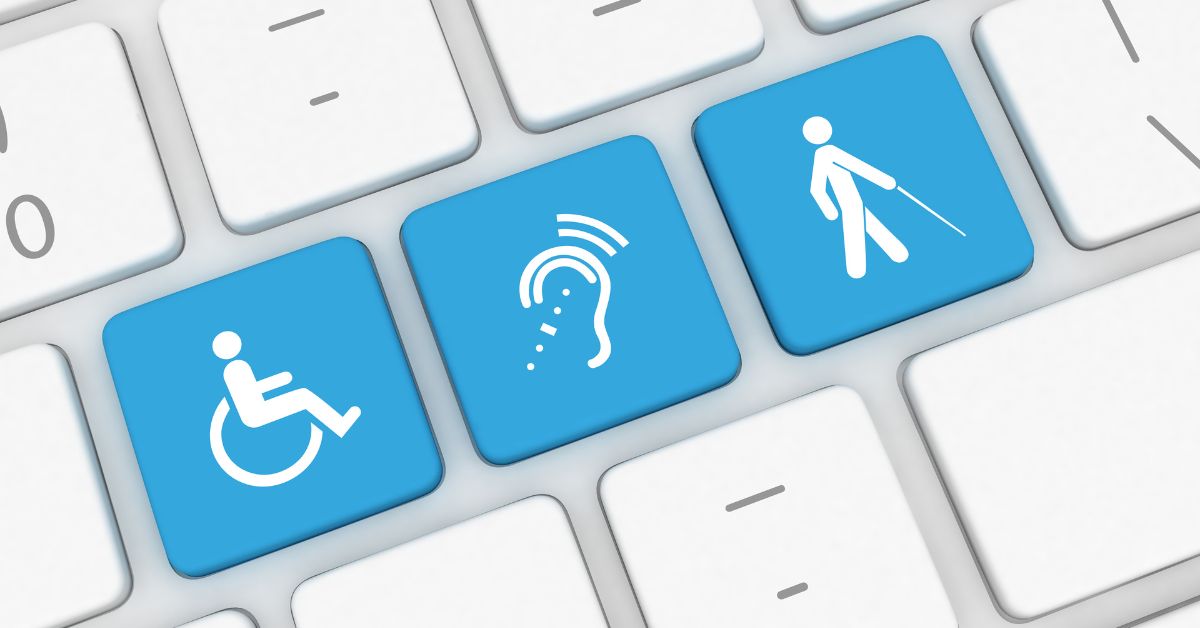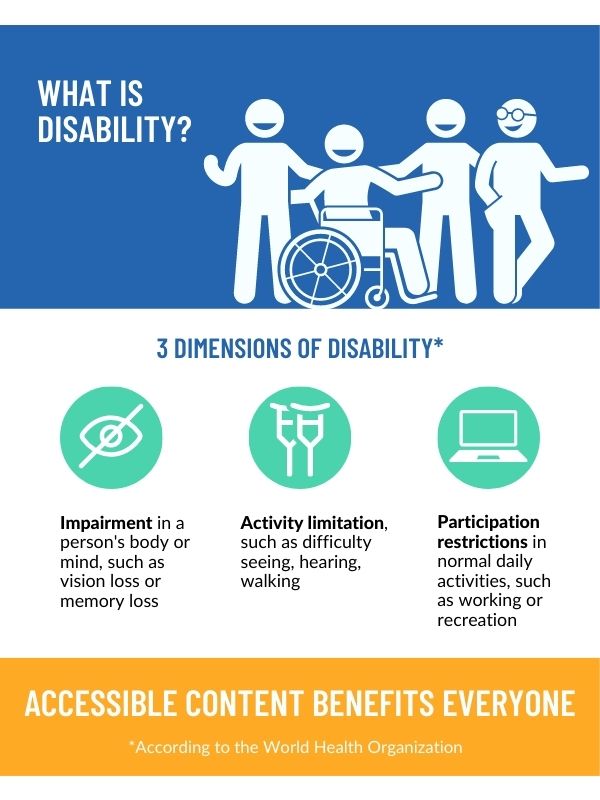Best Practices
How To's
Why Accessible Content Benefits All Students

Accessibility should be a top priority for any course content creator. Accessible content helps everyone access and engage with your lessons, whether you’re teaching in-person or online. That allows you to reach more learners and offer more engaging educational experiences.
When you hear the word “accessible,” you may think of ways to make a building or website more user-friendly. This may include adding wheelchair ramps or using easy-to-read color combinations. When it comes to course creation, accessibility has much broader applications. It’s about supporting every potential student regardless of their physical, cognitive, technological, situational, or socioeconomic challenges.
What Is Accessible Content?
Simply put, accessible content is content that can be accessed and used by any student who might choose to take your classes. This includes people with disabilities and those experiencing economic or technical challenges.
The World Health Organization estimates that 1.3 billion people globally experience significant disability. That means about one of every six people in your community may have a disability of some type. This number doesn’t include those whose situational or socioeconomic position pose challenges. Low-income families, people experiencing homelessness, and those without easy access to transportation may all benefit from accessible content as well.
In fact, anyone can benefit from accessible content. Have you ever used captions to watch a video or zoomed in to make the text on a web page easier to read? If so, you’ve benefited from accessible design practices.
With an inclusive mindset and a few best practices, you can ensure that the content you create is accessible to all.

CDC, “Disability and Health Overview,” https://www.cdc.gov/ncbddd/disabilityandhealth/disability.html
Why Is Accessible Content Important?
There’s a reason that increasing accessibility is a goal for so many organizations. Yes, it’s the right thing to do because everyone deserves access to education, but there’s a business benefit too. Building courses from accessible content expands the size of your available audience. That means more people can enroll in your courses and they’re likely to be more satisfied when they do.
The shift towards online learning made classes more widely accessible. In-person learning can be made more accessible, too, improving the experience for all students.
One of the silver linings of the pandemic is that much of our lives shifted online, making content more widely available. Organizations started offering synchronous and asynchronous online courses. These formats are tremendously beneficial for neurodivergent students and people with mobility or sensory challenges.
The move toward online learning is just one example. Making in-person learning more accessible can also improve student satisfaction. Consider how everyone benefits when slides and handouts are easy to read or classrooms are spacious enough to accommodate mobility aids.
Accessible content shows your students and your community that you’re committed to inclusive practices, helping to build empathy and understanding.
A Framework to Support Accessibility: Universal Design for Learning
Universal Design for Learning (UDL) is a framework for designing educational materials and practices that are accessible for all. It supports students with disabilities, alternative learning styles, and diverse backgrounds. The goal of UDL is to eliminate learning barriers and create inclusive learning environments.
There are three essential principles of UDL:
- Provide information in multiple modalities and formats. This includes text, video, audio, and image. This accommodates for the diverse learning styles and preferences of each student.
- Create opportunities for students to demonstrate their learning in different ways. Some students are great writers; others express themselves more clearly by speaking or drawing. UDL encourages multiple options for students to choose from so they can pick one that aligns with their strengths and interests.
- Offer engaging learning experiences. Students benefit from material that is relevant, appropriately challenging, and connected to their backgrounds and experiences.
By keeping these three tenets in mind, anyone can create a flexible and responsive learning environment. Now let’s consider how you can put those principles into practice.
How to Make Accessible Content for Courses
These guidelines and tools can help you make more accessible content for both in-person and online classes.
Follow these 3 basic guidelines to make your course content more accessible.
- Use plain language. Try to write for a seventh or eighth grade reading level. Avoid using jargon, complex sentence structures, and technical terms. If you do need to use niche language, be sure to clearly define those words. Online text scoring tools like Readable will read your content and show you where your language can be more accessible.
- Design documents for readability. Think about the structure of your text on handouts, slides, and web pages. Use headings, subheadings, bullet points, and numbered lists to organize content into digestible blocks. Use bold and italicized text sparingly, and be consistent when you do use it. This helps people who are using screen readers as well as those with visual or cognitive impairments.
- Minimize technology demands. Students without reliable internet or printer access may struggle to download large files or print forms. Also keep in mind that PDF files are not as universally accessible as they seem. Unless they’re created from a source document, PDFs are just images of texts. That means screen reader users may not be able to access the information.
These practices will help you build a library of accessible content that can be used by a broad audience.
Make Online Content Accessible
The Web Accessibility initiative has developed Web Content Accessibility Guidelines (WCAG). It includes guidance for writing and presenting content, ways to improve the user interface, and technical guidance for web development.
Some of these guidelines are well-known. For example, alt text should be used for images and color contrast should be considered in design. These are a good starting point, but there are many other ways to support web accessibility, like considering how emojis impact accessibility. The same recommendations apply for your website and registration process.
Create More Accessible Video Content
Provide closed captions and transcripts for video content. Closed captions are text descriptions synced to audio. They make video content more accessible to people who are deaf or hard of hearing.
Transcripts provide a written record, which is especially useful for anyone accessing the web using a Braille device. Transcripts also make video content accessible to people who have slow or unstable internet connections.
Offer Multiple Class Formats
When you provide learning opportunities in a range of formats, you give every student a chance to learn on their terms. For example, a student with mobility challenges may benefit from livestreamed lessons. Learners with neurodivergence may prefer pre-recorded sessions that they can pause and replay as needed. But in-person classes might be more accessible for people who may not have access to technology at home.
Whether it’s online, in a classroom, or in a public space, accessibility builds a more inclusive world for us all.
Remember that web content accessibility is just one piece of improving the daily lived experience for everyone. Accessible design helps to remove barriers that would otherwise prevent people from equally participating in daily life. Whether it’s online, in a classroom, or in a public space, accessibility builds a more inclusive world for us all.
Those are some of the many reasons that CourseStorm is focused on accessibility. Our goal is to streamline access to education for everyone. If you have questions about how CourseStorm makes your courses and content more accessible for everyone, reach out. We’re happy to help.

Brian Rahill
Brian is a scientist-turned-education technology executive. He has founded and led technology companies for more than 20 years and uses his analytical mind and experimental approach to spur growth in small and medium businesses and start-ups. He is passionate about using technology to enhance access to lifelong learning.
